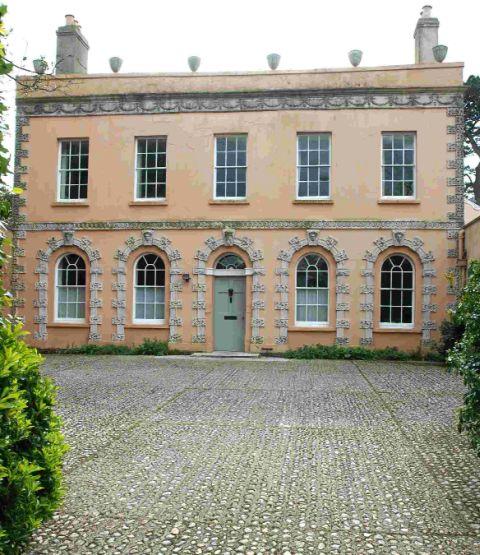THE widow of writer John Fowles has blasted an appeal launched by the Landmark Trust for the author’s Lyme Regis Home.
The charity has just begun a public appeal for £2.1 million to safeguard the Eighteenth Century Grade II* listed building which it says is at grave risk.
But the late writer’s wife Sarah has condemned the charity for what she says is its hypocrisy – and says it is the trust’s fault the building is in the state it is.
She said: “They are destroying most of the house that John lived in.
“They are raising an appeal on his name but they pulling down the main part of the house he lived in.
“I think it is hypocrisy.”
When the Landmark Trust took over the building in 2007 Mrs Fowles was happy they were going to do something with it.
But she said as soon as she moved out in 2007 the Landmark Trust gutted the building and left it empty for five years.
She added: “It is awful to watch the deterioration.
“I pass it every day. It is terribly sad and sad for Lyme. It was a beautiful house.”
The Landmark Trust gained planning permission in May 2011 to convert the home into self-catering holiday lets.
The trust has applied for a £1.3million lottery grant but says more money will be needed. Spokesman Katherine Oakes said: “The fabric of the building is deteriorating. The parapet is sagging, there are rotten wall plates and lintels, the stone skin is coming away and water is trapped behind impermeable cement render.
“Urgent restoration works are needed include re-roofing and significant structural repair.”
She said Landmark had been carrying out extensive research in the last five years.
“This enabled us to develop a scheme for its restoration, consult on our plans and apply for listed building consent and planning permission prior to launching the public phase of our fundraising appeal.
“We continue to maintain and stabilise the building in preparation for the restoration.”
In response to Mrs Fowles’ criticism, she said they were removing remnant parts of a Victorian extension which were largely removed in the 60s.
“What now remains severely compromises the importance of the seaside villa.
“This has been through the planning process and given approval.
“The restoration and subsequent re-use as a place to stay will celebrate his life and achievements.”
The charity will also open a museum room in the former stables to tell the story of Eleanor Coade, who invented Coade stone, John Fowles and Belmont’s other past inhabitants.
Caroline Stanford, the Landmark Trust’s historian, said: “Mrs Coade is a fascinating, unsung figure and John Fowles a defining author of our time.
“Their lives have become entwined at Belmont.
“Please help us enable future generations to be inspired by their achievements by donating to our appeal.”
Long history
BELMONT was the seaside villa of Eleanor Coade, the eighteenth-century inventor of Coade stone, and later the home of renowned author John Fowles.
Built in 1777 the house is a fine, early example of a maritime villa.
Eleanor Coade owned the house from 1784. In 1883 Belmont was bought by a GP, Dr Richard Bangay who transformed the villa into a large family home.
John Fowles bought the house in 1968.
He wrote Daniel Martin, The Ebony Tower, A Maggot, Mantissa and Wormholes at Belmont. The Landmark Trust plans to complete the uncovering of the original maritime villa, also keeping its observatory tower as an example of its type.





Comments: Our rules
We want our comments to be a lively and valuable part of our community - a place where readers can debate and engage with the most important local issues. The ability to comment on our stories is a privilege, not a right, however, and that privilege may be withdrawn if it is abused or misused.
Please report any comments that break our rules.
Read the rules here